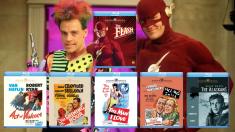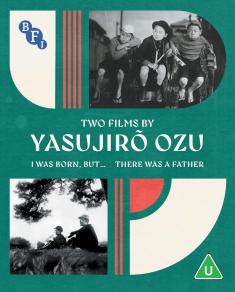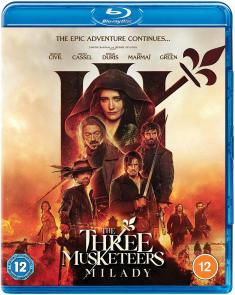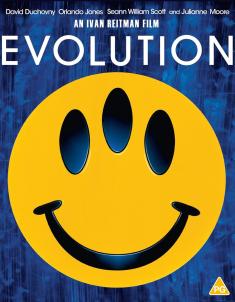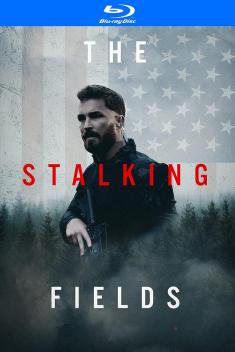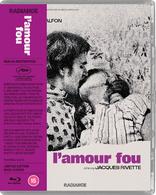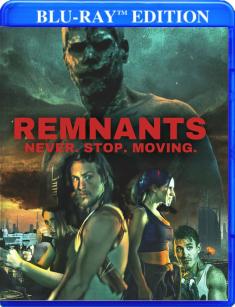The Killers - Criterion Collection
Overview -
Ernest Hemingway’s simple but gripping short tale "The Killers" is a model of economical storytelling. Two directors adapted it into unforgettably virile features: Robert Siodmak, in a 1946 film that helped define the noir style and launch the acting careers of Burt Lancaster and Ava Gardner; and Don Siegel, in a brutal 1964 version, starring Lee Marvin, Angie Dickinson, and John Cassavetes, that was intended for television but deemed too violent for home audiences and released theatrically instead. The first is poetic and shadowy, the second direct and harsh as daylight, but both get at the heart of Hemingway’s existential classic.
Storyline: Our Reviewer's Take

The underworld is a dark, morally bereft, and unforgiving place filled with ruthless thugs who would sell their grandmother's soul and predatory femme fatales who use sex as a weapon in the name of insatiable greed. Most enter this depraved universe with their eyes wide open, aware of the risks but craving the rewards, while others - naive saps who don't know any better - innocently fall into the trap, led there by the scent of perfume and promise of a passionate embrace. The hapless victim in Ernest Hemingway's short story, 'The Killers,' doesn't tell us about the events that ultimately inspire a pair of cold-blooded hitmen to hunt him down - Hemingway would never be so obvious - but the two film versions of the taut, terse tale do, expanding upon the brief vignette depicting abject evil and solemn resignation, and painting an uncompromising portrait of one man's systematic destruction.
Produced 18 years apart, the two movies - one directed as a tough, biting film noir in 1946 by Robert Siodmak and starring Burt Lancaster in his film debut and Ava Gardner in a breakout performance, the other directed as a violent exploitation flick by Don Siegel and starring Lee Marvin, John Cassavetes, and Angie Dickinson - differ in style, tone, and narrative, but focus on the same existential themes. The act of brutality that opens both films - and, more importantly, the calm, complacent, almost expectant manner in which the hunted man accepts his fate - haunts those who carry on, driving them in a quest to make sense of it. As Charlie Strum (Marvin), one of the men who pulls the trigger (over and over again) in the Siegel version muses, "I gotta find out what makes a man decide not to run. Why, all of a sudden, he'd rather die." It's a loaded question, one that Hemingway asks but doesn't answer, and though neither film delves deeply enough into the victim's psyche to furnish a concrete explanation, both provide enough information for us to draw our own conclusions.
The 1946 version sticks closer to Hemingway's story, opening in an ominous fashion as the eponymous killers enter a sleepy diner and terrorize its employees and a patron known as Nick Adams (a semi-autobiographical protagonist who populates more than two dozen Hemingway stories) in an attempt to get information about The Swede, who they've been contracted to unceremoniously bump off. The Swede usually frequents the diner, but when he doesn't show up, the hitmen wander off to sniff him out. Nick tries to warn The Swede (Lancaster), a brooding, disillusioned man who's holed up in a rooming house, but he says he's through running and just wants to be left alone. When Nick asks him why anyone would want to kill him, The Swede cryptically replies, "I did something wrong...once."
With precision and efficiency, the killers fulfill their contract. That's the end of Hemingway's story, but only the beginning of the movie. Jim Reardon (Edmond O'Brien), the insurance agent sent to investigate The Swede's death, becomes intrigued by his story and the dignified way he met his demise. One interview leads to another, and soon Reardon discovers The Swede's real name was Ole Anderson, and he was a promising boxer before an injury ended his career and he got mixed up with Big Jim Colfax (Albert Dekker), a small-time gangster, and his sultry girlfriend, Kitty Collins (Gardner), who rope Ole into participating in the high-stakes robbery of a factory. Reardon's insurance company covered the factory, and the missing take has frustrated the executives for years. It's also frustrated the members of Colfax's ring, who believe Ole robbed them of their share. As Reardon delves deeper into the crime and tries to find the coveted stash, he also learns of the relationships and circumstances that sealed Ole's fate and comes face-to-face with danger himself.
Told in a series of well-orchestrated flashbacks, the complex story fits snugly together, and Siodmak's efficient yet lyrical direction and the terrific performances of a strong cast keep our attention riveted throughout. 'The Killers' is one of a handful of mid-1940s crime dramas that coined the stark, shadowy style that would become known as film noir, and Siodmak embraces all its components. With a keen eye and a minimum of frills, he constructs an atmosphere of treachery and doom, where double-crosses reign supreme and women prowl like predatory felines as they try to scratch and claw their way to wealth and security, devouring everything and everyone who lies in their path. Though the tawdry plot doesn't live up to Hemingway's elevated standards, the screenplay by Anthony Veiller (with uncredited assistance from John Huston and Richard Brooks) captures the individualism, self-assurance, and unapologetic attitudes that often fueled the author's characters, all of whom know what they want, know how to get it, and pursue it with single-minded fierceness.
Lancaster is excellent as the burly prizefighter who harbors a quiet sensitivity and falls hook, line, and sinker for the seductive Kitty, who plays him like a violin. It would be the first in a long line of strong yet tortured heroes for Lancaster, who commands the screen with his powerful presence. Yet it's Gardner who makes the biggest impression, at last attaining stardom after years in insignificant roles. Unlike Turner and Bacall who played sexy, Gardner is sexy. Her smoky looks and husky retorts ooze allure and radiate a white-hot magnetism that's impossible to resist. It's no wonder Frank Sinatra fell so hard for her off screen and wallowed in depression after their divorce. If ever there was a true femme fatale, it would be Ava, and here, she plays the part to the hilt.
The 1964 version forgoes noir for brilliant color, ramps up the violence, beefs up the romantic angle, shifts the story's locale from boxing to race car driving, and makes the killers the main characters instead of cameos. After gunning down Johnny North (Cassavetes) in a flurry of bullets, Charlie Strum (Marvin) can't get him out of his head, and tries to piece together the events leading up to his murder. He and his partner Lee (Clu Gulager) scour the country talking to Johnny's friends and associates, who recall his blind love for the opportunistic Sheila Farr (Dickinson), who gets him to be the getaway driver for a robbery masterminded by the powerful Jack Browning (Ronald Reagan in his last big screen role before defecting to politics). Much of the story mirrors the 1946 version, but there are enough variances to make Siegel's leaner, meaner effort exciting in its own right, despite cheaper production values.
The '64 version of 'The Killers' was supposed to be the first made-for-television movie in history, and though Siegel is an accomplished director with an unerring visual sense, it looks it. Too many soundstage scenes and too much rear-projection work lend the film a bargain basement appearance, which strangely gels with the gritty narrative treatment. Siegel seems to revel in the nasty characters and their brutal deeds, and all the actors portray their unpleasant roles with relish. Dickinson is beautiful and oh-so-bad, but can't eclipse Gardner, and neither can Cassavetes match Lancaster, yet both assert themselves well, as does Marvin, who bulldozes his way through the film, crafting a riveting portrait of a cool killer who views his nefarious profession as a pure-and-simple business. Though it seems almost tame today, NBC deemed the movie too violent to air, so Universal released 'The Killers' to theaters, where it made a handsome profit.
I'm a sucker for a top-notch film noir, so if someone held a gun to my head, I'd give the '46 version of 'The Killers' the edge over its 1964 counterpart. And yet the '64 version, quite unexpectedly, dazzled me, too. Most of the credit should go to Hemingway, who conceived a premise pregnant with possibilities, but both Siodmak and Siegel maximize the material's potential, creating two films that brim with fury, tension, excitement, superior technique, and stellar performances, each in their own unique way. Which is why Criterion also deserves kudos for packaging this crime drama duo together, so we can compare and contrast them, analyze their respective viewpoints, and enjoy them to the fullest.

The Blu-ray: Vital Disc Stats
Both the 1946 and 1964 versions of Ernest Hemingway's 'The Killers' arrive on Blu-ray packaged in a standard Criterion case. Two fold-out booklets - a six-page edition for the 1946 version and an eight-page edition for the 1964 version - featuring critical essays, cast and crew listings, and transfer notes are tucked inside the front cover. Both films and their respective supplements reside on a single BD50 dual-layer disc. Video codec for both films is 1080p/AVC MPEG-4 and audio is LPCM mono. Once the disc is inserted into the player, the full motion menu with dialogue and music from both films immediately pops up; no previews or promos precede it.
Video Review

The deep shadows, stark contrast, and gritty feel of film noir are well represented in Criterion's excellent transfer of the 1946 version of 'The Killers,' which was struck from a 35 mm nitrate fine-grain master positive. Though not quite as pristine as other Criterion efforts - a few age-related nicks and marks occasionally crop up - the image sports palpable but not overwhelming grain that reflects the story's rough-and-tumble nature. A few scenes look slightly ragged around the edges, but a nicely varied gray scale and rich, inky black levels help the picture achieve wonderful clarity and vibrancy. Shadow detail is quite good and the glamorous close-ups of Gardner spotlight her breathtaking allure.
The 1964 version, originally shot for television, was mastered from a 35 mm interpositive and looks equally good. Lush, colorful, and vibrant, the image pops off the screen, making the down-and-dirty story seem more immediate and threatening. Evident grain adds welcome texture, so the picture doesn't appear too slick, while stunning clarity and marvelous contrast heighten depth. Hues are bold and sumptuous (especially the deep red of Johnny's robe and Sheila's dress), flesh tones are natural and stable, black levels are solid, and razor-sharp close-ups nicely show off fine facial features, tears, and sweat. Unfortunately, the enhanced definition makes the shoddy rear projection work look worse than ever (an interior mock-up of an exterior pit stop looks awfully fake, too), but the high-quality picture, spotless source material, and lack of any digital tinkering make this transfer a true winner.
Audio Review

Both films feature good-quality LPCM mono tracks that have been mastered at 24-bit from 35 mm magnetic tracks. Age-related imperfections, such as hiss, pops, and crackles, have been meticulously erased, leaving clean, nicely modulated audio that flaunts a fair amount of depth. Gunfire, footsteps crunching against pavement, and revving car engines are all crisp and distinct, and musical interludes, such as Gardner singing 'The More I Know of Love' in the 1946 version and the divine Nancy Wilson crooning Henry Mancini's appropriately titled 'Too Little Time' in the 1964 version, sound rich and full. All the dialogue in both films is clear and easy to comprehend, and just a few hints of distortion creep into the 1964 version during the elongated racing sequence. Though these are both basic tracks, they suit their respective films well and enhance the atmosphere of tension and dread that permeates them.
Special Features

Once again, Criterion comes through with a substantial supplemental package that does both films justice, as well as Hemingway's original short story.
1946 Version
-
Interview with Stuart Kaminsky (HD, 18 minutes) - The late Stuart Kaminsky was one of my film professors at Northwestern University back in the early 1980s, during the period when he contributed to the screenplay for Sergio Leone's 'Once Upon a Time in America,' so it was a great pleasure to see him discuss both versions of 'The Killers' in this 2002 interview. He compares the two films stylistically, calling the 1964 version a "white-hot film rather than a dark film noir." (According to Kaminsky, who wrote a biography of director Don Siegel, producer Mark Hellinger wanted Siegel to direct the 1946 version, but couldn't borrow him from Warner Bros, so he went with Siodmak instead.) He also notes how the two adaptations interpret the story differently, due to the time period in which they were made. In addition, Kaminsky provides a primer on film noir and talks about the "fatalistic heroism" that pervades Hemingway's 1927 short story in this enlightening piece.
-
Audio Recording of Hemingway's Short Story (18 minutes) - Actor Stacy Keach brilliantly interprets Ernest Hemingway's 1927 short story in this riveting audio recording. Keach's vivid characterizations and colorful vocal shadings bring Hemingway's sparse prose to life, and by hearing the original work we can appreciate just how closely the first couple of scenes of the 1946 version follow the story, right down to its word-for-word use of some of the dialogue.
-
Vintage Audio Adaptation (30 minutes) - On June 5, 1948, director Robert Siodmak recreated his film for radio audiences in an episode of the Screen Director's Playhouse. Lancaster reprised his role and Shelley Winters ably subbed for Ava Gardner. Though truncated to a mere 30 minutes, which includes an introduction and a good deal of post-show chatter by the stars and director, the bold nature of the piece still shines through.
-
Short Film by Andrei Tarkovsky (HD, 19 minutes) - This very literate, no-frills adaptation tells Hemingway's story just as it's presented on the page, and the result is a lyrical, highly effective piece of filmmaking. Tarkovsky was still a student at a Soviet film school when he made this short (it was his first outing as a director), and his grasp of technique, framing, and storytelling is quite advanced. If you want to see 'The Killers' just as it's written, this is the version that most closely follows the plot and honors the tone.
-
Robert Siodmak Trailers (HD, 10 minutes) - Five previews for various Siodmak films are presented here, including 'Son of Dracula' (1943), 'Cobra Woman' (1944), 'The Killers' (1946) (re-release trailer), 'Cry of the City' (1948) (in which Shelley Winters' first name is misspelled as "Shelly"), and 'Criss Cross' (1949) (re-release trailer).
1964 Version
-
Interview with Clu Gulager (HD, 19 minutes) - The actor who plays Marvin's sidekick shares his recollections of production during this entertaining 2002 interview. Gulager remembers Marvin as the most insecure man and actor he ever knew and "paranoid to the nth degree," yet he praises his work and cites 'The Killers' as "the apex of his acting career." He also has kind words for Claude Akins (whom he didn't respect before the shoot) and Angie Dickinson, who "made love to the camera." He recalls Ronald Reagan hated playing a villain (and this was his first crack at such a conniving role) and professes deep admiration and affection for Siegel, whom he terms outwardly passive and "as meek as a lamb" on the set, but he knew how to get what he wanted on screen. Gulager also believes NBC made a "horrendous mistake" by refusing to air 'The Killers' and lost a tremendous amount of revenue because of the decision.
-
Audio Excerpt from Don Siegel's Autobiography (20 minutes) - Actor and writer Hampton Fancher (best known for penning the 'Blade Runner' screenplay) reads from Siegel's colorfully written autobiography, 'A Siegel Film,' which is chock full of great anecdotes about the making of 'The Killers.' We hear how Jack Warner hated Siegel, so refused to loan him to Universal to direct the 1946 version, and how Siegel didn't want to copy Siodmak's earlier film or use any Hemingway dialogue. He also was adamant about telling the story from the killers' perspective. Siegel writes about Marvin's perpetual inebriation during shooting, Dickinson's hysterical reaction to JFK's assassination, the birthday prank he pulled on Cassavetes, and how Reagan stuck up for a bit player whose lines kept getting stepped on. Fancher reads the material in a natural and lively manner that maintains interest and makes one want to grab a copy of Siegel's book.
-
Theatrical Trailer (HD, 2 minutes) - The film's original preview highlights its sensational aspects and rounds out the extras package.
Final Thoughts

Ernest Hemingway's classic short story of a cold-blooded execution inspired two very different films, but both the 1946 and 1964 versions of 'The Killers' capture the violence, double-crosses, soul-searching, and numbing sense of fatalism that permeate the tale. Robert Siodmak's 1946 version stands as a quintessential film noir laced with cynicism, disillusionment, and sex appeal in the form of a drop-dead gorgeous Ava Gardner, while Don Siegel's more contemporary take pummels us with in-your-face imagery and raw emotion, all wrapped up in a tough macho package. Though I prefer the elegance and artistry of the earlier adaptation, Siegel's reimagining impressed me more than I thought it would. Both are supremely entertaining, often fascinating films, and Criterion's single-disc Blu-ray presentation, which features top-notch video and audio transfers and an absorbing array of substantive supplements, does both movies justice. Fans of Hemingway, Lancaster and Gardner, film noir, and riveting crime tales need to pick up this disc, which earns a very enthusiastic recommendation.
